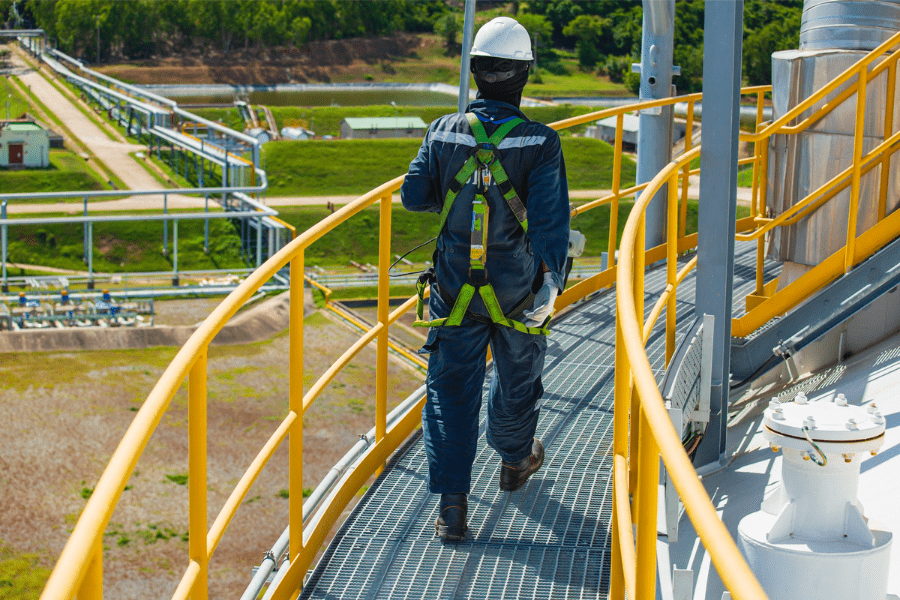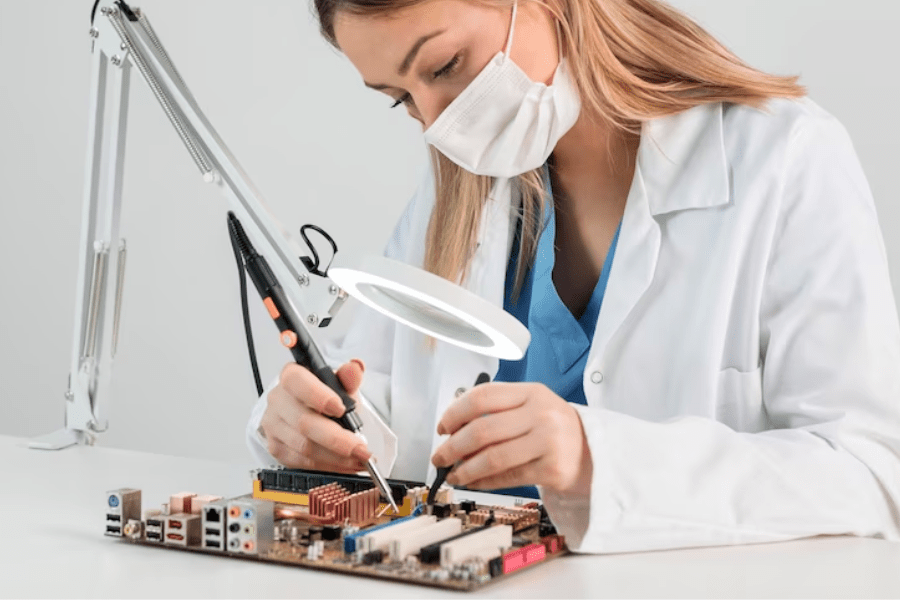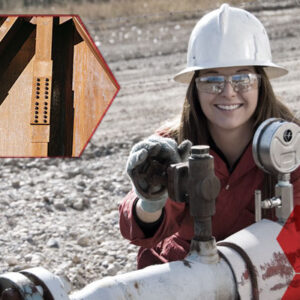Introduction to Cathodic Protection Program

Cathodic Protection is one the most effective methods of preventing corrosion on metals subject to electrolytic corrosion. These are generally structures of different types of metals submerged entirely or partially in water or soil. It refers to the protection of metal surfaces by converting active surfaces on a metal (that are prone to rusting ) into passive surfaces by making them the cathode of an electromagnetic cell.
AMPP, The Association for Materials Protection and Performance, offers one of the world’s best and most widely accepted cathodic protection programs. Their most popular certifications in Cathodic Protection are
CP1 – Cathodic Protection Tester Certification
CP2 – Cathodic Protection Technician Certification and
CP3 – Cathodic Protection Technologist Certification
If you are interested in cathodic protection, you can enrol in a cathodic protection course in India, which provides a comprehensive understanding of the principles and techniques involved in cathodic protection.
CP1 – Cathodic Protection Tester Certification

CP1 is their first beginner-level program for cathodic protection. CP1 stands for The Cathodic Protection Tester certification and is specially created for people responsible for ensuring the cathodic protection systems work correctly. It is an entry-level program for individuals who want to develop a career in cathodic protection. To enrol in the program, you need not have any experience. However, you need to have a minimum of six months of experience in the field and a basic knowledge of the working of galvanic and impressed current cathodic protection systems to acquire the CP1 certification.
The Cathodic Protection Tester Certification is useful for people who are responsible for supervising the cathodic Protection systems, those who measure or record data about the day-to-day workings of these systems, such as Cathodic Protection field personnel and technicians. It is also helpful for individuals interested in cathodic protection who want to enter this field.
CP2 – Cathodic Protection Technician Certification

CP2 – Cathodic Protection Technician Certification is an intermediate-level program designed for individuals who want to deepen their knowledge of corrosion theory and cathodic protection concepts. This certification covers advanced field measurement techniques and different types of cathodic protection systems. It’s ideal for people with a strong engineering or scientific background and some working knowledge of cathodic protection or those with extensive field experience and technical backgrounds.
If you want to learn more about cathodic protection and become an expert in the field, this certification is perfect for you. To apply, you should have experience testing the effectiveness of cathodic protection systems, troubleshooting problems, and recording data. This includes cathodic protection field personnel, cathodic protection testers, and people who supervise cathodic protection testers. If you work in any of these roles, this certification can help you advance your career and increase your knowledge of cathodic protection systems.
CP3 – Cathodic Protection Technologist Certification

The Cathodic Protection Technologist certification is ideal for individuals with a robust engineering or scientific background and extensive practical experience in cathodic protection. The programme is designed to provide comprehensive knowledge of theoretical concepts and hands-on experience in cathodic protection, with an emphasis on interpreting cathodic protection data and identifying and addressing cathodic protection problems.
Suppose you are someone who has years of field experience in cathodic protection and a solid technical background or possesses an in-depth understanding of cathodic protection concepts. In that case, pursuing this certification can be an excellent option for you. This programme is particularly suitable for individuals who need to enhance their knowledge of cathodic protection design procedures based on a better understanding of cathodic protection concepts.
By obtaining the Cathodic Protection Technologist certification, you will be able to demonstrate your expertise in this specialised field, which can be invaluable in a range of industries, including oil and gas, pipeline, and water treatment. In addition, this certification will enable you to acquire the skills and knowledge needed to effectively design, install, and maintain cathodic protection systems, which is critical to ensuring the safe and efficient operation of a wide range of infrastructure and assets.
Understanding the Different Types of Cathodic Protection

The principle of Cathodic protection is to reduce the corrosion of materials by reducing the potential difference between the anode and the cathode of a material. At its core, cathodic protection relies on electrochemistry. Metal corrodes when it loses electrons in the presence of oxygen and water. By applying a negative voltage to the surface of the metal, cathodic protection creates a barrier that helps prevent this electron loss from occurring. Cathodic protection is used to protect high-value commercial assets such as underground storage tanks, pipelines, ship hulls and other offshore infrastructure from the natural processes of corrosion.
The two most common ways of achieving cathodic protection are through
Sacrificial Anode Cathodic Protection and
Impressed Current Cathodic Protection (ICCP).
Galvanic Cathodic Protection

Galvanic Cathodic Protection is also called Sacrificial Anode Cathodic Program. Galvanic Cathodic Protection uses the corrosive potential of different metals to protect them from corrosion. Corrosion occurs when certain sections of the structure have a greater negative potential than the other sections. To prevent corrosion, a less inert object like a magnesium anode is positioned next to the structure to be protected, such as a pipeline. Then, an insulated wire is used to create a metallic connection between the object and the structure. As a result, the object becomes the anode, and the whole structure becomes the cathode.
This sacrificial anode cathodic protection system is named as such because the anode corrodes sacrificially to protect the structure. Galvanic anodes, typically made of magnesium, aluminium or zinc, are generally preferred as they have a higher potential than steel structures, due to which they corrode first and protect the structure.
Impressed Current Cathodic Protection

Impressed Current Cathodic Protection (ICCP) system uses the same elements as a galvanic protection system. Still, the protection occurs due to the application of the current to it from an anode. The structure and the anode are connected by an insulated wire, and the current flows from the anode through an electrolyte onto the structure. This system works differently by passing the electrical current from an external power source onto the structure or equipment through anodes that have been installed around it. This process creates a reverse reaction preventing corrosion. The external power system is generally a rectifier that converts AC power to the necessary DC power level. The rectifier can be adjusted to maintain the appropriate output throughout the system’s lifespan. The anodes used in impressed current cathodic protection systems are generally made of high-silicone cast iron or graphite. This system provides better control over corrosion rates but requires more maintenance than sacrificial systems.
The main difference between galvanic cathodic protection and an impressed current cathodic protection system is that the galvanic system relies on the potential difference between the anode and the structure to be protected. In contrast, the impressed current system uses an external power source to drive the current to the structure and create a protective barrier.
The Science Behind Cathodic Protection Program

Let us understand the science behind the Cathodic Protection Program of protecting commercial assets from the natural phenomenon of corrosion. In Cathodic Protection, the electrochemical reaction that leads to corrosion on the surface of a metal is altered by using an electric current, making the surface less reactive or cathodic.
It is used to protect valuable national and commercial assets such as submerged pipelines, storage tanks, ships and offshore structures from soil and water damage due to electrolytic reactions. The program may or may not use a direct power source, such as transformers or rectifiers, for this purpose, depending on the kind of program installed to protect the structure.
The cathodic protection principle is based on the property of electricity to affect corrosion. A galvanic cell is formed when two metals are in contact with each other, which leads to a process of corrosion. Here, one metal acts like an anode and corrodes away, while the other acts like a cathode and remains protected from oxidation or corrosion.

Faraday’s Law states that when metallic ions move between electrodes through a solution (electrolyte), they do so at rates proportional to their molecular weights and valencies under constant conditions. The cathodic protection program uses this property to control the corrosion of valuable assets by placing metals that act as anodes at precisely calculated distances to maximise the protection of valuable assets.
It uses an electrochemical reaction between two different metals in an electrolyte to control the electrochemical process of corrosion. The protected material becomes the cathode, while the more reactive material corrodes preferentially and acts as an anode. A potential difference is created between the two metals as the electric current flows from the anode to the cathode. As a result, the strength of electric currents flowing through them is controlled with precision once they are calibrated for specific applications.
Why You Need a Professional Cathodic Protection Program

Suppose you own or operate any structure that comes in contact with water or soil, or are responsible for taking care of an underwater structure. In that case, it is essential to have a professional cathodic protection program in place. This program protects the metal surfaces of your structure from corrosion caused by various natural phenomena. The absence of a proper cathodic protection program will lead to extensive damage to the structures’ metal components leading to expensive or irreparable damages. Cathodic protection of pipelines that carry critical infrastructure is mandatory in many countries to prevent corrosion-related failures and ensure the safe and reliable transportation of fluids or gases.
A cathodic protection professional conducts an assessment of the risk of corrosion of your assets in the specific environment and designs a tailored solution for you. The cathodic protection designed for you will depend on the results of the various tests conducted, such as electrolyte pH survey, current requirement, size of the structure to be protected, conditions at the site and cost efficiency. In addition, specific structures such as gas distribution lines, water tanks of a certain specified capacity and underground pipes located within 10 feet of steel-reinforced concrete require a mandatory cathodic protection program in place for their maintenance.
Affordable Cathodic Protection Program Solutions

There are various kinds of cathodic program solutions available, and the most affordable program is one which provides the maximum longevity and safety of your valuable assets. It should be remembered that a cathodic program is not an expense but an investment into the maintenance of your property and is a mandatory requirement in many industries.
AMPP (Association of Material Protection and Performance) is one of the leaders in providing cathodic protection programs, and professionals certified by them are accepted globally and across all industries. The two central cathodic protection systems are the galvanic anode system and the impressed current system. However, many industries, such as oil and gas, marine, water treatment, power, and chemical industries with large and complex structures, use a combination of the two methods to achieve maximum protection while minimising costs. This kind of cathodic protection is called mixed cathodic protection or hybrid cathodic protection.

A Cathodic Program professional conduct an onsite survey of the structure to be protected and performs various tests to determine the exact environmental conditions the structure is subject to. After that, the data collected is analysed, and a cathodic protection program is designed accordingly. The affordability and the cost of a program depend on various factors such as the size of the structure to be protected, its location and the environmental conditions around the structure. A professional cathodic protection expert brings about a perfect balance of cost-effectiveness while maximising the life of your assets. With experienced professionals taking care of your valuable assets, you can have peace of mind knowing that both your budget and infrastructure are protected.
Cathodic protection is a crucial tool for ensuring that your essential metal structures last for years to come without succumbing to rust or other forms of degradation. So whether you are interested in a cathodic protection program to protect your valuable structures or are looking to develop a career in this field, AMPP offers you the most comprehensive and affordable programs and certifications.
Image Reference: Freepik
Disclaimer: All trademarks, logos, and brand names are the property of their respective owners. All company, product, and service names used in this website are for identification purposes only. Use of these names, trademarks, and brands does not imply endorsement.

